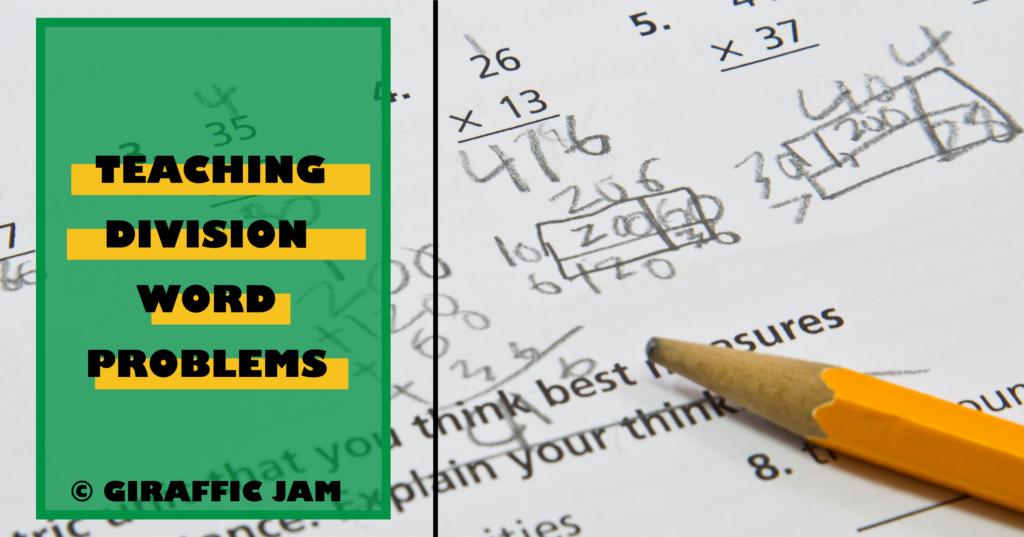
Teaching division word problems doesn’t have to be hard. But, it is a fundamental skill in early mathematics education. Teaching division isn’t just about numbers; it’s about turning little thinkers into problem-solving wizards. We’re here to share some super cool and easy ways to help kids get the hang of division in real-life situations. Forget the boring old drills – we’re talking about fun, practical tips that make learning division a breeze for your students or your own kiddos. Whether you’re a teacher looking for some fresh ideas or a parent eager to help out with homework, this post is your go-to guide for making division as easy as 1, 2, 3.
Division word problems are like little stories where your kids can use division to figure things out in everyday situations. Take a problem like, “If you have 12 cookies and want to share them equally among 4 friends, how many cookies does each friend get?” It’s not just about dividing 12 by 4; it’s about picturing a real-life scenario where division is the solution.
What’s great about these problems is that they help kids see how division is used all around us, like when sharing treats or splitting things into groups. They’re not just crunching numbers; they’re learning to understand what the story is really asking. Your kids become math detectives, hunting for the key information in the problem and using it to figure out how to divide things fairly. It makes math a fun and relevant adventure, not just a bunch of numbers on a page. Plus, it’s a fantastic way to boost their problem-solving skills and build confidence in handling division in their daily lives.
Wait! Before you go to teaching division word problem keywords, remember that keywords should NOT be the only strategy you use when teaching division word problems!
Why?
Read these problems:
Jase has 7 bananas and 4 apples. How many fruits does he have in all?
Jase has 8 bananas. He gives away 4 bananas. How many fruits does Jase have in all?
Jase has 3 bags. Each bag has 4 apples. How many apples does he have in all?
Jase has 18 apples. He puts 3 apples in each bag. How many bags does he have in all?
If you taught that “in all” ALWAYS means addition, your students would be wrong 75% of the time! Keywords should be taught as a tool, not as the ‘be all, end all’ when working with word problems!
Students should ask themselves three questions:
If their answers are “yes, no” then they will be dividing!
Want to make the above strategy even easier?
A visual chart is a great way to do that!

This free resource can be used with ANY word problem – just put it in a dry erase pouch so students can use it again and again!
Teaching division word problems doesn’t have to be challenging. With a visual chart, students can see when they need to add, subtract, multiply, or divide. With practice and numberless word problems, students will be solving problems in no time!